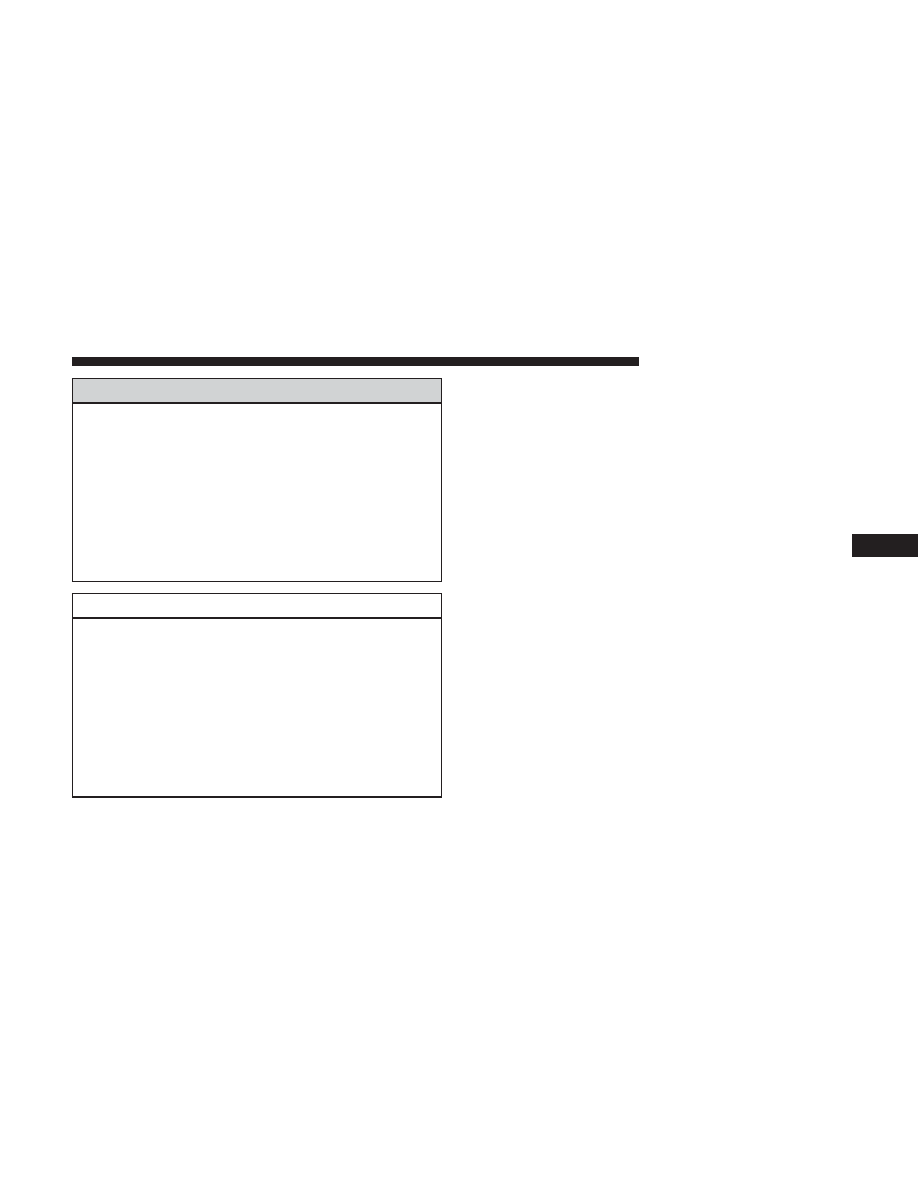Fiat Abarth (2018 year). Manual - part 12

WARNING!
• Never have any smoking materials lit in or near the
vehicle when the gas cap is removed or the tank is
being filled.
• Never add fuel when the engine is running. It may
cause the MIL to turn on and could cause a fire.
• A fire may result if gasoline is pumped into a
portable container that is inside of a vehicle. You
could be burned. Always place gas containers on the
ground while filling.
CAUTION!
• Damage to the fuel system or emission control sys-
tem could result from using an improper fuel filler
cap. A poorly fitting cap could let impurities into the
fuel system. Also, a poorly fitting aftermarket cap
can cause the “Malfunction Indicator Light (MIL)” to
illuminate, due to fuel vapors escaping from the
system.
• To avoid fuel spillage and overfilling, do not “top
off” the fuel tank after filling.
NOTE:
• When the fuel nozzle “clicks” or shuts off, the fuel tank
is full.
• Tighten the gas cap about 1/4 turn until you hear one
click. This is an indication that the cap is properly
tightened.
• If the gas cap is not tightened properly, the MIL will
come on. Be sure the gas cap is tightened every time the
vehicle is refueled.
Loose Fuel Filler Cap Message
After fuel has been added, the vehicle diagnostic system
can determine if the fuel filler cap is possibly loose,
improperly installed, or damaged. If the system detects a
malfunction, the “gASCAP” message will display in the
odometer display. Tighten the gas cap until a
⬙clicking⬙
sound is heard. This is an indication that the gas cap is
properly tightened. Push the odometer reset button to turn
the message off. If the problem persists, the message will
appear the next time the vehicle is started. This might
indicate a damaged cap. If the problem is detected twice in
a row, the system will turn on the MIL. Resolving the
problem will turn the MIL off.
6
STARTING AND OPERATING
185